
Selecting the right dehumidifier is a minefield for many people as brands send out conflicting information trying to persuade consumers to buy. Do you need a desiccant dehumidifier or a compressor model? Our sales are fairly even between the two technologies which puts us in an unique situation to provide unbiased advice.
There are two types of dehumidifiers: desiccant and compressor. At Meaco, we manufacture and sell an equal amount of both types of technologies, so we are uniquely placed to give unbiased advice on which would be best for your needs. Both types of appliance will help prevent mould and damp by extracting water.
Because there are two different types of dehumidifier technology on the market, confusion comes when someone has to decide which one to buy. Below is a cut-and-keep guide to making the right choice.
Generally speaking, a compressor dehumidifier is suitable for a room with an air temperature above 10°C, and a desiccant dehumidifier is more suited for temperatures below 10°C.
So, there are 6 key factors which may help you decide whether a desiccant or compressor dehumidifier suits you best:
- What is the temperature of the space you want to use your dehumidifier?
- Will a dehumidifier keep the room warm and dry?
- Can a dehumidifier dry laundry?
- How much does a dehumidifier weigh and how easy is it to move around?
- How much does a dehumidifier cost to run?
- And how much noise does a dehumidifier generate?
Compressor dehumidifiers are the established way of doing things having been around for 50+ years. They work by creating a cold surface and when the warm, damp air from within the room comes into contact with the cold surface, condensation forms, and the water is removed from the air. Jump to the comparison table.
A desiccant dehumidifier has no compressor and does not use a cold surface to extract the excess moisture from the air. Instead, it has a desiccant wheel that absorbs the moisture from the air, in a similar way to a sponge. The desiccant is regenerated by an internal heater and fan so that the process can be repeated time and time again. Jump to the comparison table.
Main applications to consider when choosing between dehumidifier types:
Which type of dehumidifier is best for cold or cooler conditions (temperature is below 10°C)? When the room air temperature is likely to fall below 10°C, for example in a conservatory, garage or colder home, a desiccant dehumidifier is the most suitable type. This is because, desiccant dehumidifiers maintain a consistent performance, regardless of the surrounding temperature.
Compressor dehumidifiers, on the other hand, need the inside of the machine to be colder than the air within the room in order for it to perform correctly. So, the colder the room, the harder the dehumidifier has to work to create that cold surface. As the temperature starts to fall down towards 10°C, the chances are that the inside of the dehumidifier will get close to freezing, increasing the chances of ice forming on the dehumidifier’s cooling coils. Below 10°C, compressor dehumidifiers are programmed to spend more and more of their time defrosting themselves rather than dehumidifying.
Pictured: Desiccant dehumidifiers are recommended for cold rooms although the MeacoDry Arete® One compressor dehumidifier also works well.
As a rule of thumb we would always recommend a desiccant dehumidifier if the room temperature is below 10°C, a desiccant dehumidifier or a large compressor dehumidifier (either a 20L or 25L) if the room temperature is between 10°C and 15°C and any type of dehumidifier, including a small compressor dehumidifier (10L or 12L), if the room temperature is above 15°C.
Below 10°C: desiccant dehumidifier only
Between 10°C and 15°C: desiccant dehumidifier or a large compressor dehumidifier (20L or 25L)
Above 15°C: desiccant dehumidifier or any size compressor dehumidifier (10L, 12L, 20L or 25L)
Small compressor dehumidifiers used in rooms below 15°C and large compressor dehumidifiers used in rooms below 10°C will not perform well. Having said that, you will see that both of the larger MeacoDry Arete® One dehumidifiers are Which? Best Buys and in their reviews found that they both performed better than expected at 10°C and that the 25L model was exceptional. Desiccant dehumidifiers (such as the Meaco DD8L) will perform the same regardless of the room temperature.
Desiccant dehumidifiers are recommended for cold rooms although the Arete® One 20L and 25L compressor dehumidifiers also work well, as you can see here in the classic car garage.

Which type of dehumidifier is best to keep your house warm and dry?
Most customers are looking for a dehumidifier to keep their home condensation free. Or to tackle the problem of too much humidity in the air causing damp and mould. They need a dehumidifier that will take excess moisture out of the air, and some also like it to warm up the room where it’s operating.
Both compressor and desiccant dehumidifiers will warm the air up slightly – the air naturally warms up as it passes through the dehumidifier. The air coming out of the compressor dehumidifier will be about 2°C warmer. This will not warm up the room the dehumidifier is being used in (and will actually feel cold to touch! This is because the air is moving). However,the air coming out of a desiccant dehumidifier will be about 10-12°C warmer and will have a significant impact on the temperature of the room its being used in – think of it as a 2 in 1 dehumidifier and heater!
So, if you are putting the dehumidifier into a hallway that is on the chilly side, the desiccant dehumidifier makes sense. If the hallway is already nice and toasty then the compressor dehumidifier is the correct option.
So, for a cold room – the winner is desiccant. For a warm room – the winner is compressor.
Is a desiccant dehumidifier good for drying laundry?
Drying washing indoors is one of the most common reasons why homes suffer from condensation, damp and mould. Laundry dries because the air around it is drier than itself. So the washing gives up the moisture in order to be in equilibrium with its surroundings. However, the moisture from the laundry has to go somewhere and this leads to condensation, damp and mould. Using a dehumidifier not only creates a dry atmosphere and blows air across the wet washing speeding up its drying time, it also captures the excess moisture from the clothes and prevents it from causing problems in your house such as condensation, damp or mould.
Drying washing using a dehumidifier works in the same way as drying the laundry on a line in the summer – honest! The laundry dries fastest outside on a dry, warm, windy day. And the laundry inside will dry faster if the warm, dry air created by the dehumidifier hits the clothes.
Both desiccant and compressor dehumidifiers are good at drying laundry. A desiccant dehumidifier tends to have a larger top speed air flow than a compressor dehumidifier and the air coming out of the dehumidifier is warmer (giving it that extra edge).
The DD8L Zambezi has a unique low energy drying cycle for laundry which makes it the best desiccant for drying laundry, as well as a lourve which directs the airflow onto the clothes. Although compressor dehumidifiers don’t have the additional heat they are cheaper to run and therefore can dry a load of laundry at less of a cost than a desiccant. Many compress dehumidifiers, including our MeacoDry Arete® One range, have dedicated laundry modes to dry your laundry in 6 hours.
For drying washing, the winners are the DD8L Zambezi and for low cost drying the MeacoDry Arete® One range.
Pictured: Desiccant dehumidifiers can be used to dry washing cost-effectively.
Product features to consider before purchasing:
Planning on moving the dehumidifier around the house? You’ll need to know which weighs less, a desiccant or compressor dehumidifier.
However, there may be times when you want to move the dehumidifier around. For example, you might have built-in wardrobes in a bedroom that are prone to mould growth. You might have the dehumidifier upstairs on the landing but need to move it downstairs to dry the washing, or you might like to move it into a conservatory now and again or use it to dry out a poorly ventilated bathroom.
Compressors add about 6 kilograms to the weight of a dehumidifier, so carrying a desiccant dehumidifier around is a lot easier than carrying a compressor dehumidifier around. However, most compressor dehumidifiers come with castors, making them more portable.
Carrying your dehumidifier – the winner is desiccant.
Energy Consumption – how much does a dehumidifier cost to run?
Customers are understandably interested in how much it costs to run a dehumidifier. Compressor dehumidifiers are in general cheaper to run. However, a desiccant releases its extra energy as heat. So there will be a cost to run your dehumidifier, but you are getting heat back into your home, meaning you can reduce your central heating accordingly. And that has a positive knock-on effect on your bills. You have to decide if you want or need this additional warmth or if you just want the cheapest dehumidifier to run.
For example, in our compressor range, we have the Meaco Low Energy 12L Dehumidifier, running at just 4p / kWh as well as our MeacoDry ABC 12L, running at just 4p / hour based on 26.35p / kWh. That means, you can have the dehumidifier on 24 hours a day, maintaining your home humidity levels for just 96p per day.
So, for low energy and low cost operation – the winner is compressor dehumidifiers.
The good thing is, whichever dehumidifier you choose, a compressor or a desiccant, the dehumidifier will be removing cold, damp air from your home, meaning you don’t have to put your heating on as high – saving you money on your energy bills!
Noise levels – how much noise does a dehumidifier make?
This is an area where dehumidifiers have changed a lot over the past 5-10 years. It used to be the case that a desiccant dehumidifier on low fan speed was your quietest option, but a few years ago the MeacoDry ABC Range changed all of that with 10 and 12l models at just 36dB (close to the sound of a whisper). And then, we changed it again with the new Arete® One 10 and 12L compressor dehumidifiers which are even quieter at 35dB. So you can now buy a dehumidifier that is the quietest and cheapest to run.
For quiet operation, the winner is Meaco ABC 10L and 12L and MeacoDry Arete® One 10 and 12L Dehumidifier and Air Purifier. These dehumidifiers are all a whisper-quiet 35/36dB.
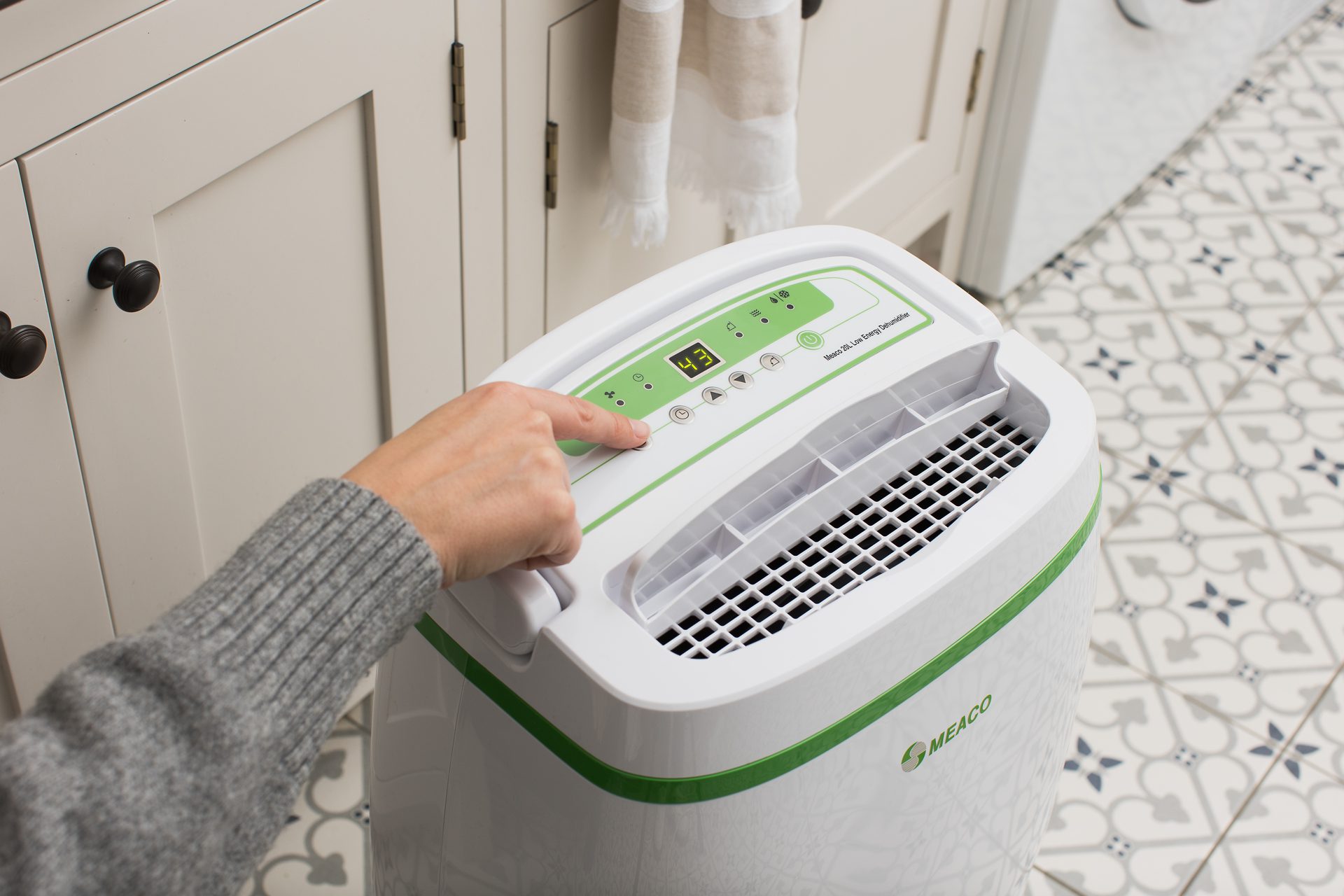
Which Dehumidifiers Can Do More Than Just Extract Moisture, Which Can Double Up As An Air Purifier As Well?
Many dehumidifiers can now be fitted with HEPA filters so they can purify the intake air as well as extracting moisture. At Meaco, we supply medical-grade H13 HEPA filters to selected compressor dehumidifiers. These can retain 99.75% particles as small as 0.3 micrometers in diameter, making it great for people with allergies like hayfever or other respiratory medical conditions such as asthma.
Because of the heat elements and sensitive parts of a desiccant dehumidifier, we do not supply things like HEPA filters. By putting anything which reduces the air intake onto the dehumidifier, we’re reducing its efficiency and can harm the machine. Equally, if things like sawdust from a garage/workshop got into the mechanics, you could be serving a short life sentence for your dehumidifier.
However, compressor dehumidifiers like the MeacoDry Arete® One and Meaco Low Energy range, are supplied with a H13 HEPA filter. It can be easily inserted into the dehumidifier turning it into a combined dehumidifier and air purifier. You can use this as much or as little as you want – the filter doesn’t have to be in the unit all the time, however when it is, the air in your home is being purified of dust, dirt, allergens, mould spores and VOCs! It’s important HEPA filters are replaced when they change colour from white to dark grey, this tends to be around every 3 months.
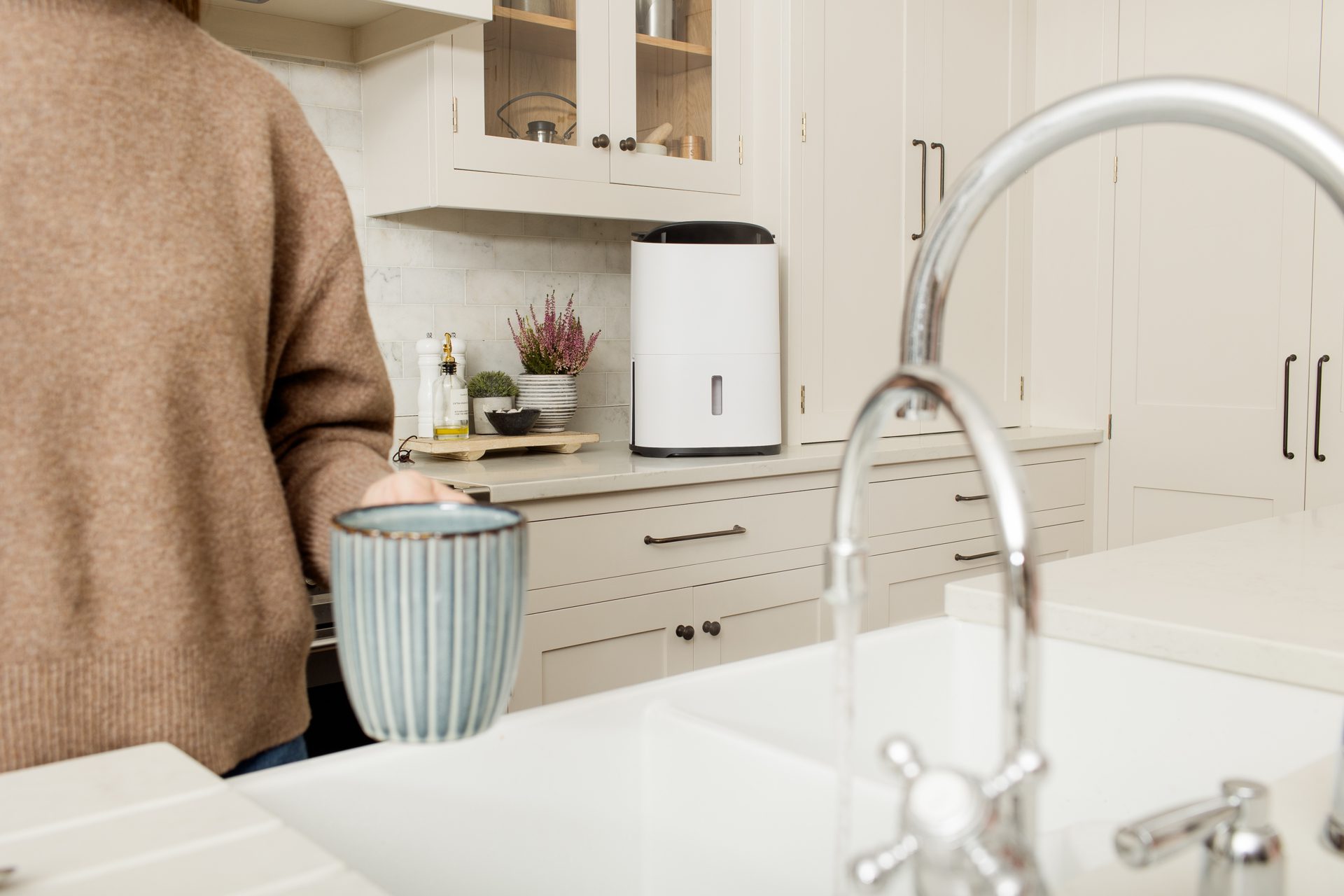
Let’s summarise the desiccants vs compressor dehumidifier debate, each is useful in different applications:
Desiccant
Compressor
Effective in which temperatures:
Desiccant:
Works well in all temperatures and are the recommend dehumidifier below 10°C
Compressor:
Only effective in spaces over 10°C, performs best at 16°C and above
Does it provide heat to the room?
Desiccant:
Yes, desiccants emit some additional warmth which can be useful
Compressor:
No, this does not provide additional heat
Are they effective when drying washing?
Desiccant:
Yes, actually optimal as they extract moisture and add warmth to drying laundry
Compressor:
Yes, these will successfully help you to dry washing indoors
Laundry mode available?
Desiccant:
Most Meaco dehumidifiers come with Laundry Modes. Check the technical specifications for more information.
Compressor:
Most Meaco dehumidifiers come with Laundry Modes. Check the technical specifications for more information.
Which is lighter in weight?
Desiccant:
Lightest and therefore easiest to move
Compressor:
The equivalent sized compressor dehumidifier will weigh an additional 6kg, however lots come with castors
Which has a cheaper cost to run?
Desiccant:
Desiccants are more expensive to run, our MeacoDry DD8L costs 9p / kWh
Compressor:
Compressors are cheaper as a general rule. Our MeacoDry Arete® One 10L costs just 4p / kWh
Which dehumidifier uses less electricity?
Desiccant:
Around 330 watts at 20°C and 60%rh
Compressor:
Between 150-260 watts depending on the size at 20°C and 60%rh
Which generates the lowest noise levels?
Desiccant:
Traditionally quieter, the 8L desiccants in our range are 39 dB
Compressor:
The latest ABC and Arete® dehumidifiers are Quiet Mark accredited, measuring 35dB and above.
Which has the longest lifespan?
Desiccant:
Lifespan is dependent on a lot of factors including the environment and how well the dehumidifier is looked after
Compressor:
Lifespan is dependent on a lot of factors including the environment and how well the compressor is looked after, however, our Arete® range is the only range to come with a free 5 year warranty
Which has the best sizing options?
Desiccant:
Because of the mechanics, desiccants only come in 8L however this is suitable from a 1 bed flat to a 5 bed house
Compressor:
Multiple sizes available for different sized houses
Which can clean the air as well as dehumidify?
Desiccant:
Dehumidify only
Compressor:
Our MeacoDry Arete® One and Meaco Low Energy range are combined dehumidifiers and air purifiers
Best application
Desiccant:
Lower temperatures or places you may want some extra warmth. For example, an unheated conservatory.
Compressor:
Applications over 10C. These are cheaper to run and available in more sizes. Great for home living.
You can see that it is not as simple as many dehumidifier brands make out when they claim that a desiccant dehumidifier – or a compressor dehumidifier is best. This is because they are normally biased towards one or other of the technologies. Hopefully the above will help – but if you are still not sure what’s best for you, give us a call on 01483 234900, email customerservice@meaco.com or comment below and we will be happy to talk it through with you.
Browse our ranges: Compressor Dehumidifiers, Desiccant Dehumidifiers
Products featured: Meaco ABC 12L , Arete® One 10 and 12L Dehumidifier and Air Purifier, Meaco DD8L, Meaco DD8L Zambezi, Meaco Low Energy Dehumidifier 12L


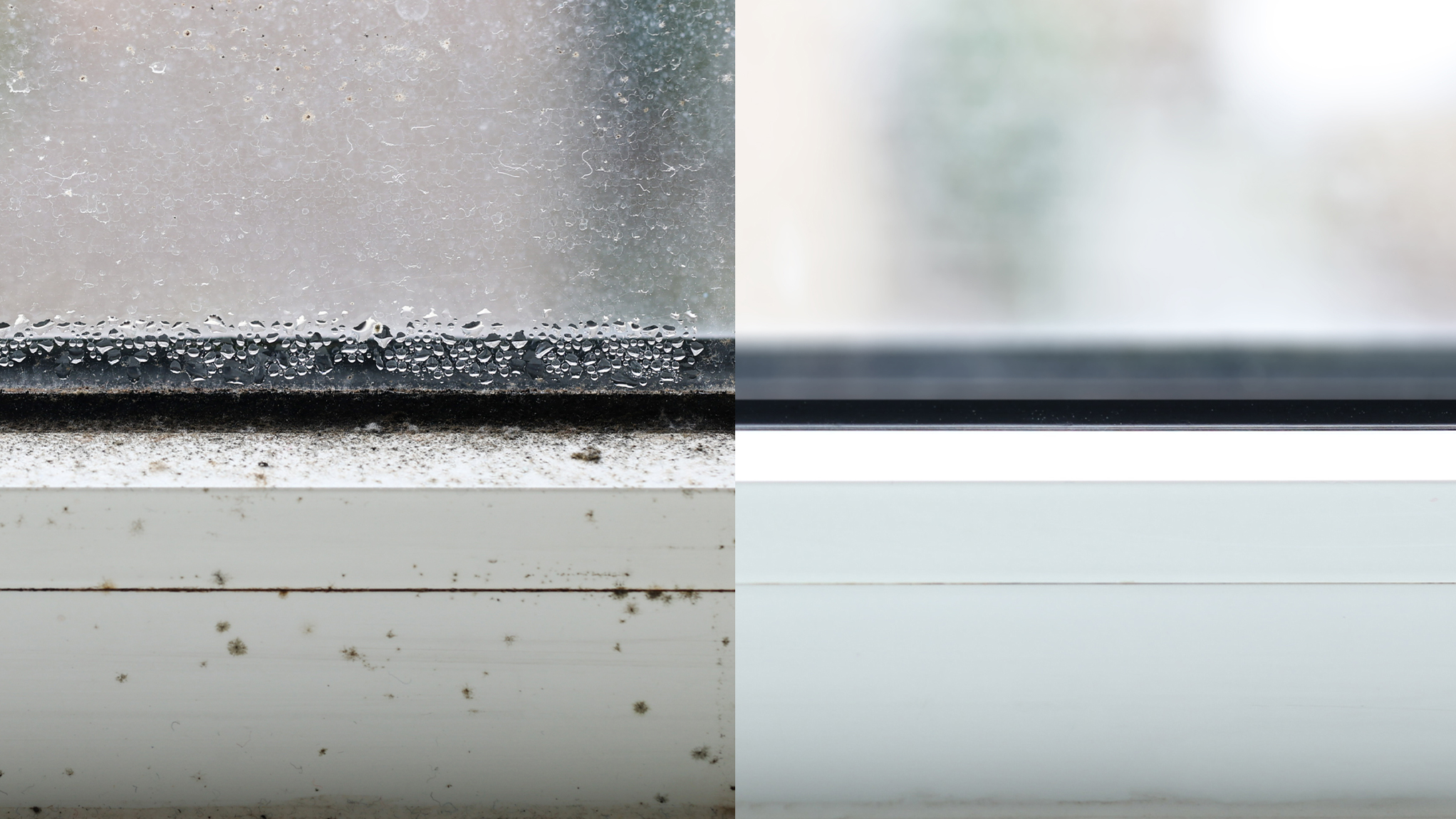

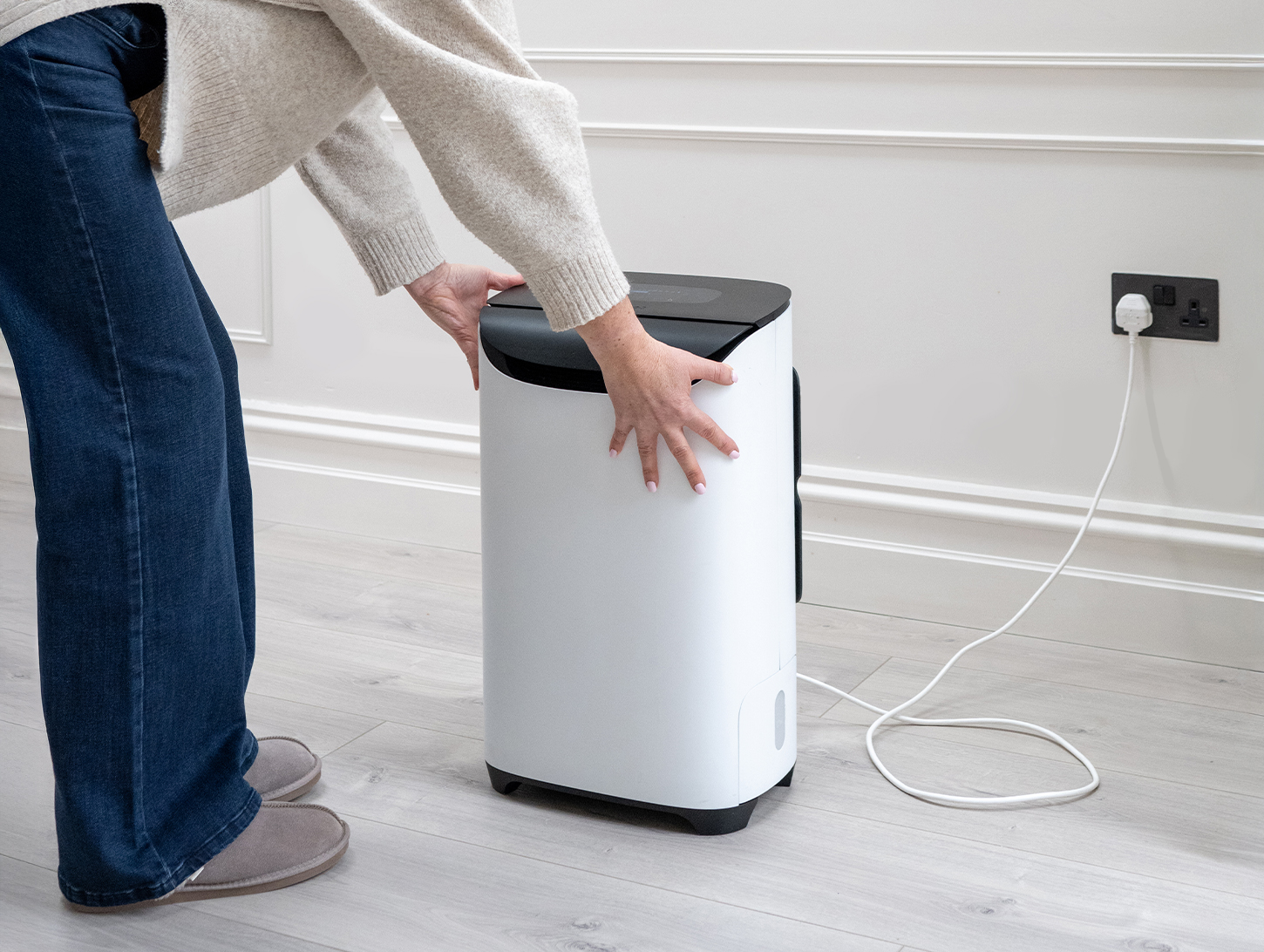

252 responses
I have 3 bedroom house. The main problem is the small bathroom as it has no window and with showers it steams up alot and high humidity etc, paint peels, mould and walls stay damp. Please could you advise me which is the ideal meaco dehumifier to buy.
Jan,
Go for one of the 12L models like the MeacoDry ABC 12L or the Meaco 12L Low Energy Dehumidifier and place it on the landing outside of the bathroom. If you leave the bathroom door open when you have finished in the shower then the dehumidifier will be able to solve the problem.
Chris
I live in Kentucky USA and need a basement dehumidifier to reduce humidity in the summer months. Temperature is typically around 68 deg F (20 deg C) in the basemnet with the air conditioner operating. Humidty can get up to 70%
John,
Thank you for your message, you will find our American range on http://www.meacousa.com.
Chris
I am looking for 1 or 2 dehumidifiers for a house that has been unoccupied over these winter months. In addition the roof has been leaking which has now been repaired. I was told that we should only initially extract moisture and not turn the heating on as the plasterwork can crumple as it dries out in a warm environment. Because it is cold I think I will need a dessicant but the problem is that the dessicant also warms the room. Is there a dessicant that does not warm the air?
Belinda,
Sorry to hear that you have had the leak. To be honest unless the room is very small a desiccant dehumidifier will not increase the room temperature because the wattage is not high enough. Having said that a Meaco 25L Ultra low energy dehumidifier would be my choice here because it can extracts lots of water, uses very little energy and works well at lower temperatures.
Chris
Hi Chris,
I’ve just purchased (but not yet received) a Meaco DD8L Junior and am hoping you can clarify a few things for me.
I went for a desiccant for quietness, effectiveness at slightly below room temp. (e.g. 15 deg.), slightly better portability and hopefully faster extraction.
I’ve seen apparently contradictory statements regarding efficiency. Obviously if a unit is running at higher power, it will cost more per hour but my understanding (and the counter-argument) is that desiccants reduce the humidity more quickly than compressors. So, will a desiccant reach a target relative humidity quickly enough to offset the higher power usage?
Simply, does it cost more (energy and money) to run a desiccant in this way or not and, if so, by roughly what factor?
Secondly, given that the fan and ‘power’ settings are independent, how do the various combinations affect total power output and extraction rates/effectiveness?
Finally, when it comes to laundry, what is the most efficient way to use the unit, and do you have any tips to improve effectiveness? I ask this as I have have struggled in the past with another reputable dehumidifier. I found that often even around 6 hours was not sufficient, despite the airflow directed at the laundry. Some items would be dry with others still fairly wet (not just damp). It proved necessary to constantly move garments around to distribute the drying. My expectation is that a dehumidifier could be left on for 4-8 hours overnight to dry laundry. This is clearly impractical if the garments have to be re-distributed during the drying and I suspect using a tumble drier would be cheaper! I am hoping for more success with the DD8L Junior.
Regards,
James
James,
Thank you for your comments and your purchase. On the desiccant dehumidifiers single fan speed turns on half of the heater so you use half energy and receive half the extraction rate. Second fan speed gives you 100% of the heater and laundry increases the fan speed.
So in single fan speed you will get 3.5 litres in a day and in full fan speed you will get 7.5 litres in a day. These figures will remain more or less the same regardless of room temperature.
On a compressor machine you get less water the lower the room temperature and relative humidity is. If we use 15°C and 60%rh as a guide you would need a 20L compressor dehumidifier to get 4.8 litres per day in return for 199 watts. At 10°C this falls to 2.5 litres.
To dry laundry faster put the clothes and the dehumidifier in a small room and make sure that the dry air from the dehumidifier can hit as many of the clothes as possible. And then use a pedestal fan to drive more air against other clothes. the fastest time we have had re[ported back to us is just 45 minutes!
Hope this all helps.
Chris
Chris,
Thanks for the reply. On the energy usage question, I perhaps didn’t word that well enough. Since the DD8L has separate fan speed and humidity extraction level settings, I was wondering how those various combinations affect both the power usage and overall extraction rate?
With your example for efficiency, I think you’ve compared total extraction volume? I think the assumption is that both dehumidifiers would be operating at maximum to achieve 60% rh and that desiccant would therefore use roughly 65% more energy (single fan), extracting only 70% of the water. But the scenario I had in mind was that both units would reach the target rh then operate to maintain it, where I would expect them to turn off/sample, thereby not running [at maximum] continuously. Does that make sense?
I have to say, I’d be a little surprised if the compressor were still that much more efficient under these circumstances. May have to rethink that!
Thanks.
James,
In single fan speed the desiccant uses 330 watts and in the second fan speed 650 watts for your 3.5 and 7.5 litres in a day.
We can only give you accurate data for extraction and power usage across a day because they things can be reproduced in test laboratories. How much moisture would needed to be extracted to maintain a relative humidity would depend on room air volume and the amount of water that is being added to the air through other activity. So it would be different for every customer and would change every day.
Certainly it is the case with any dehumidifier that once the space has been dried out they tend to spend more time off in standby mode than they do running.
Chris
I have a basement flat in the Caribbean of about 750 sq ft The temperature is normally between 26 to 32 degrees centigrade and very humid . What is best , dessicant or compressor dehumidifier? Need continuous drain.
Should be able to take the dessicant version on a plane!
Roger,
You need a compressor machine and I would suggest buying locally to avoid damage in transit and for better warranty support. Air conditioning will also help because it dries the air as it cools.
Chris
We have a church schoolroom that is approx 50ft x 30ft x 12ft that is set into a hillside. One end is around 7ft below ground level while the other is at ground level. The walls have no cavity or DPC and so it suffers from dampness. The vinyl paint on the brickwork is blistering – it was painted with that “to keep the damp in” before it was realised that that is a bad idea. There is no heating most of the time, so presumably a desiccant dehumidifier would be best, but I’ve no idea whether this situation equates to a 3, 4, 5 or more bedroom house. Any pointers would be welcome.
David,
As long as the temperature does not drop below 10C then I would use the Meaco 25L Ultra Low Energy dehumidifier as this will give you lower running costs and will extract more water.
If you want to discuss further then feel free to contact the office during the week.
Chris
Hello. My husband and I have retired to a 3 bedroom bungalow. The lounge, dining room and kitchen are all open plan. Our bedroom windows are literally running with water in the morning and likewise the kitchen door window. We are having trickle vents fitted which we are hoping will help the problem although we have doubts whether it will solve it completely. We feel we may have to buy a dehumidifier and wonder if you could help by suggesting one suitable for a bungalow. Any help would be much appreciated. Many thanks
Lynne,
I would go for the MeacoDry ABC 12L dehumidifiers as it is the quietest dehumidifier but has the capacity to sort your problem out. Place it in the hallway and get used to leaving the internal doorways open as much as possible so that the air can move about. I would suggest using an extractor fan in the kitchen and bathroom. If you do not have extractors then put them onto your to-do list and in the meantime open the windows in the bathroom and kitchen for 15 minutes after using them.
If you dry washing on a clothes horse then put the dehumidifier next to the clothes horse when you do.
Hope this helps.
Chris
Hi Chris
I’ve been looking at the Dd8l to use outside my girls bedrooms which are in the attic and as were coming into the winter months we get condensated windows, also is it ok to use in a bathroom for streaming walls when shower has been used and again as winter approaches drying washing indoors.
Any advice will be greatly received Thankyou.
Lynn,
The DD8L will definitely help. No need to use it in the bathroom, just leave it on the landing and leave the internal doors open and it will do the same job without having to worry about mains power and wet people in the bathroom.
Damp air in the house will migrate towards the dehumidifier as long as you leave the internal doors open and all will be fine.
Chris
Hi Chris,
I am looking for a dehumidifier for my home and am so confused about compressor or dessicant!!
I live in an old 2 bed cottage and feel I can smell damp on clothes but no sign of mould just a musty smell at times.
I have a wood burner and central heating and keep thermostat at 10 when out but turn it up in winter to 20 when in.
Which to buy??????
Jackie,
Thank you for your message.
If you want the cheapest, quietest dehumidifier to run then go for the MeacoDry ABC 12L. If you want a machine that is quiet and adds a small element of warmth to the space then go for the DD8L Junior.
Hope this helps.
Chris
Hi Chris, my son’s room is on the ground floor, 2 external walls, small (2.25x3m), he has a 120 L tropical aquarium in it which creates a lot of humidity and smells- also the room is right opposite the bathroom (with not much ventilation) and next to the house entrance. His room gets pretty cold in the winter, it may drop under 15C, am not sure- but heat would be wellcome, so would air purifying. We live in a 3 bed house, central heating but am drying clothes inside (no tumble drier), kitchen has no heating and no extractor (and black mould patches behind cupboards) , we have 1 indoor cat and some fur/dust allergies. Would like to sort my son’s room especially, a bit of help with the rest of the house would be an added bonus but I guess I could get 2 dehumidifiers in time. What would you reccomend?
Christina,
With your son’s room does he have a lid on the tank, this would stop a lot of the humidity issues. If he keeps his bedroom door closed then he would need a dehumidifier in his own room. If it can be left open all day then you could have one in the hallway to serve his room and the bathroom. i would then get used to drying the washing next to the dehumidifier so that they dry faster and the moisture from them goes into the dehumidifier and not around the house. As we are looking at a dehumidifier close to the bedroom then it has to be the MeacoDry ABC range because they are so quiet and much quieter than everything else.
You will find the appropriate dehumidifier via this link – https://www.meaco.com/dehumidifier/home-dehumidifiers/meacodry-abc-range-12l-compressor-dehumidifier
Hope this helps.
regards
Chris
Thank you Chris. Could I add a HEPA filter to the MeacoDry ABC or would I have to get a different model if I would like the air purification as an extra feature?
Christina,
The ABCs big brother the Meaco 12L Low Energy comes with a HEPA filter. You cannot add a HEPA filter to the ABCs.
https://www.meaco.com/dehumidifier/home-dehumidifiers/meaco-12l-low-energy-dehumidifier
Chris